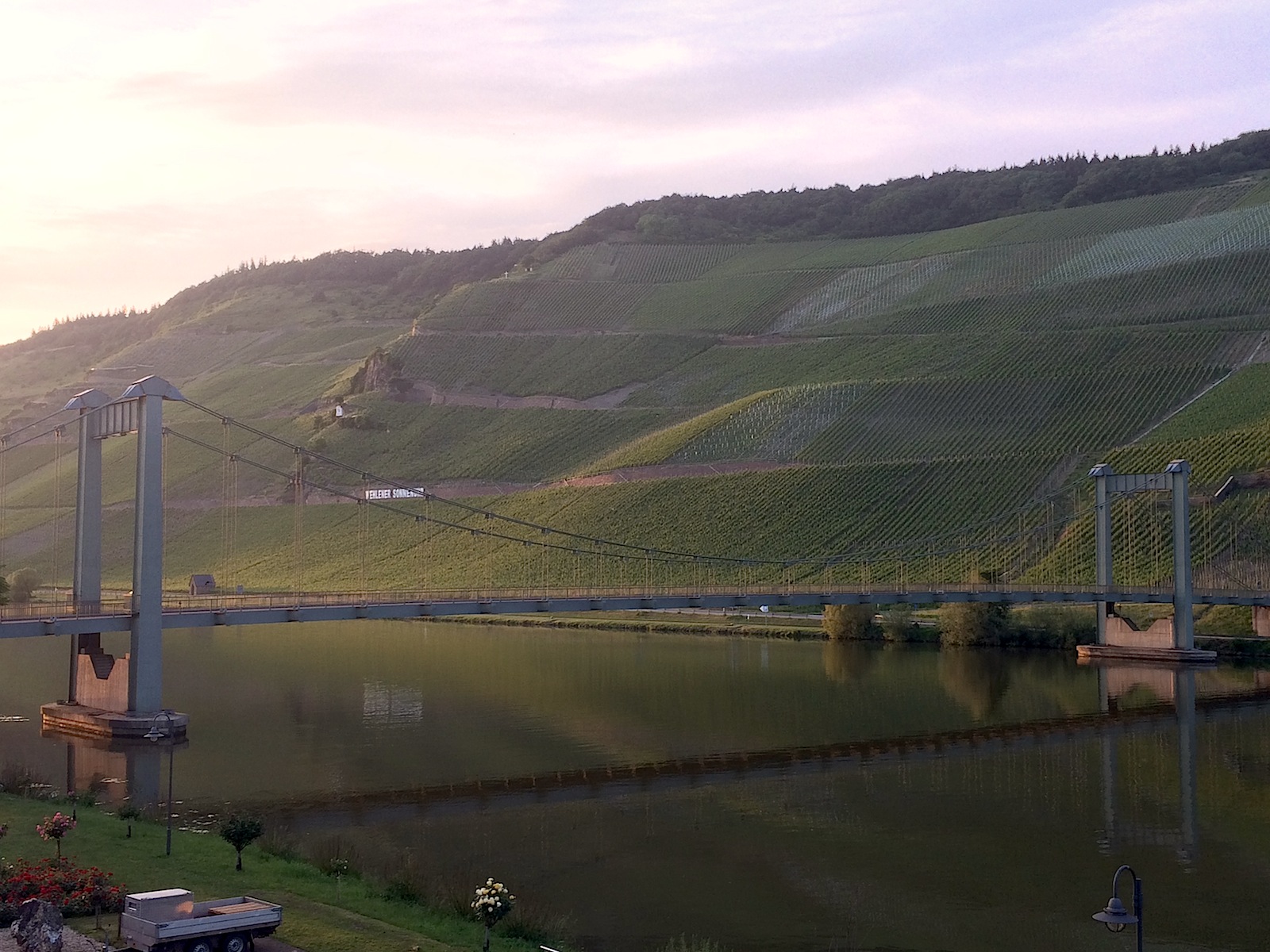The Surprising Success of the 2017 Mosel Vintage
*This report was updated on September 20, 2018, , with the addition of 71 more wines in total that we tasted from the region.
Global warming has been a boon for the cool-climate Mosel Valley in Germany, especially the cooler tributaries such as Saar and Ruwer, because the region has completely abolished unripe vintages. However, climate change hasn’t only been a blessing to them. Shortly before the picking began at the Mosel in 2017, the producers did not have high hopes for the quality of the vintage due to the savage combination of spring frost, summer hail and fall rot. While we had also expected a small crop of very erratic quality, the 2017 Mosel vintage turned out to be a wonderful surprise. Readers who enjoy aromatic, mineral and elegant rieslings should try these exciting new releases from the dramatic Mosel river valleys.
The overall impression of our recent tasting, which consisted of nearly 500 bottled wines from leading producers, is that the 2017 Mosel vintage is more consistent and exciting than expected. The only problem is the small quantities as the crops were downsized by 15% and 60% depending upon the exact location. It was a situation further exacerbated by the fact that the 2015 and 2016 vintages were both somewhat below average in terms of quantity. In other words, if you’d like to buy the highly rated rieslings featured in this report, you will have to act fast. We would recommend you to contact the merchants and distributors now to avoid disappointment.

Here is a scenic shot of the world-famous Wehlener Sonnenuhr vineyards at sunset.
However, these low yields also have a major upside. As Christoph Schaefer of the Willi Schaefer estate in Graach on the Middle Mosel explained, “We only have 50% of a normal crop, but the other half that is missing is still in there. You really taste it in the concentration!” And that is very true of his wines, which all rated 95 points or higher — an extraordinary achievement. In fact, sheer concentration is a common factor in all of the top producers’ wines in the region this year. The rieslings of the 2017 Mosel vintage are powerful wines with a firm structure, while also retaining the low to moderate alcoholic percentage (from 7% to 10% for sweet wines and 10% to 12.5% for dry wines) that the region is famous for.
A generation ago, the results of such a challenging growing season would rarely have matched what we have in this 2017 Mosel vintage. The elevated quality level is very much the result of winemakers’ enormous increase in ambition, as well as attention and care in vineyard cultivation and rigorous selection at harvest. As Christoph Schaefer also observed, “There wasn’t only good botrytis in 2017. That was the problem. As a result, we had the normal number of harvesting hours for half the quantity of wine.” In the past, very few growers would have bothered to do all that work for a crop so small. Indeed, if a small percentage of unclean grapes made their way into the press with the healthy fruit, the quality of the entire production would have been pulled down.
It is worth breaking down the results of our tastings by category because there is considerable variance among them. For the dry and medium-dry rieslings that dominate production in the region today, the 2017 Mosel vintage is at least comparable with the elegant, medium-bodied 2016 vintage. And in most cases, the 2017 is also better than the atypically rich and powerful 2015 vintage. This is reflected in the number of highly rated wines of this style. It is exceptionally evident in the 2017 Goldtröpfchen Riesling from Julian Haart, the 2017 Riesling 1896 — which is named after the vines planted 122 years ago — from Carl Loewen and the 2017 Zeltinger Sonnenuhr Riesling Auslese *** Green Cap from Markus Molitor, as they’ve all scored a total of 97 points on JamesSuckling.com.

Mosel's rising star Julian Haart of Piesport made an outstanding array of wines, including a perfect 100-point Auslese.
When it comes to the lusciously sweet Auslese, the BA and TBA wines, which the region’s reputation still largely derives from, the 2017 Mosel vintage is clearly superior to the 2016. The 2017 Scharzhofberger Auslese and Auslese Gold Cap from Egon Müller Scharzhof, the 2017 Abtsberg Auslese and Auslese Nr. 56 from Maximin Grünhaus, the 2017 Erdener Prälat Auslese Gold Cap, the Auslese Long Gold Cap from Dr. Loosen and the 2017 Zeltinger Sonnenuhr Riesling Auslese *** Gold Cap from Markus Molitor are all classics under this category.
However, despite all achieving high scores, they were all led by a newcomer: Julian Haart. The Ohligsberg Auslese *** and Schubertslay Auslese *** from Julian Haart were rated 99 and 100 points respectively. The 31-year-old’s first vintage was 2011, and even today he only has five hectares of vineyards near his hometown of Piesport and the Wintrich close by. Moreover, the quantities of these wines were tiny due to the frost damage, which pulled the average down below 30 hectoliters per hectare at his estate. This ultimately led to the decision of making them from free-run juice only. Thanks to the wines’ incredible concentration and racy brilliance, we rated all of Julian Haart’s recent releases very highly.
He is not an isolated example of new winemakers with small vineyard holdings and wines capable of winning a number of high scores and our attention. Andreas Adam of A. J. Adam in Dhron, Florian Lauer of Peter Lauer in Ayl, Gernot Kollmann of Immich-Batterieberg and the Swiss Daniel Vollenweider of the eponymous estate in Traben-Trarbach all fall into this category. Their wines also greatly impressed us last year, so their triumph is no fluke. They represent a new alternative elite to the region’s established stars.

In this white wine-dominated region, Daniel Twardowski only makes spätburgunder reds under the label Pinot Noix.
The name of Daniel Twardowski from the north of Germany, who is also based in Dhron, is another worth adding to the list of up-and-coming producers. He makes only spätburgunder — pinot noir in German — reds from the 3.3 hectares which he started planting himself back in 2006. His sole wine named Pinot Noix has a uniquely aromatic, powerful yet crisp style. The extraordinary 2015 of this Pinot Noix was rated 96 points, placing Twardowski in the first league of German pinot producers. The Mosel is changing fast!
Equally noteworthy is the number of important producers who are putting the new vintage out in the market later than the norm. This includes prominent producers such as Joh. Jos. Prüm, which presented their 2016s to us at the tastings. They were some of the best wines of that vintage in the Mosel and are no less worthy of attention and cellaring. — Contributing Editor Stuart Pigott